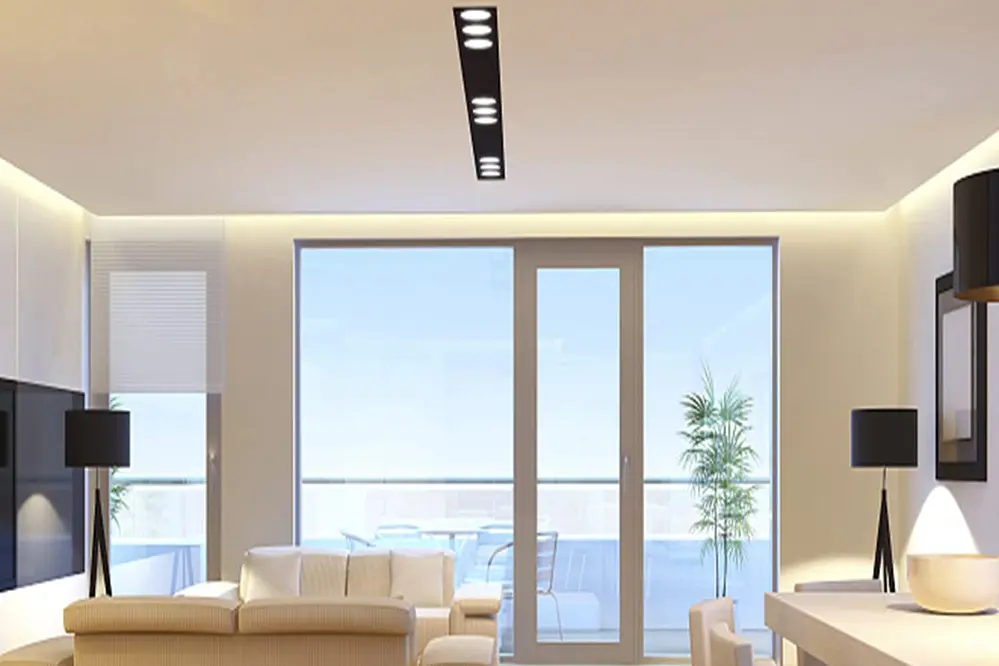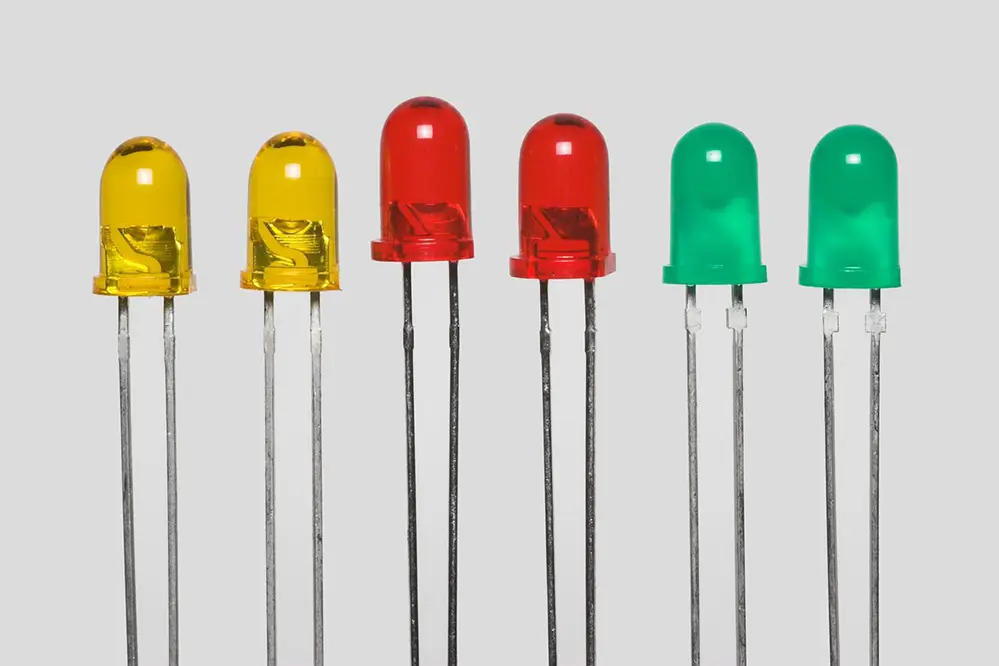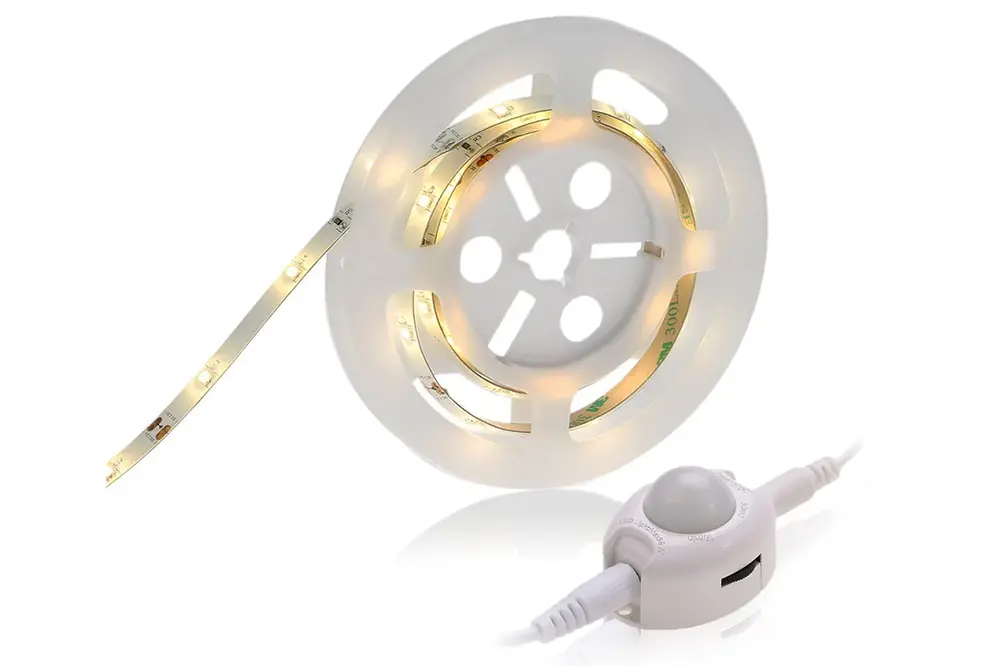“Have you ever wondered how to make LED lights turn on when the door opens? This simple question opens the door to a world of possibilities, transforming the way we interact with our living spaces.
Many people assume that such technology requires complex systems or expensive gadgets, but the reality is far more accessible. By understanding the basics of LED lighting and sensor technology, you can create a seamless and efficient lighting system in your home.
The benefits are numerous: from increased energy efficiency to enhanced security and convenience. In this article, we’ll explore the essential tools and steps needed to achieve this DIY project.
So, if you’re ready to revolutionize your home lighting, read on to discover how you can easily implement this smart solution.
Gather Necessary Materials

Embarking on the journey to make your LED lights turn on when the door opens requires a few essential materials. These will ensure not only a seamless installation but also an enduring function.
First, arm yourself with LED strip lights or LED bulbs, depending on your preference.
Next, acquire a magnetic door switch and a relay, often available at local electronic stores or online.
You’ll also need a set of connectors or a soldering iron to ensure all components are properly linked.
Adhesive strips to securely position the LED lights and electrical tape to insulate connections can also be beneficial.
Lastly, don’t forget a robust power supply. Choosing a supply that’s compatible with your setup ensures that your LED lights function flawlessly and shine with vibrancy.
Understand How LED Lights Work

LED lights, or light-emitting diodes, harness the potential of tiny semiconductors to emit photons, thereby producing light.
The magic, or rather the scientific marvel, lies in a phenomenon known as electroluminescence. When a voltage is applied, electrons move through a semiconductor material, releasing energy in the form of light. This process not only makes LEDs efficient but also extends their lifespan, allowing them to outshine and outlast their traditional incandescent counterparts.
Interestingly, LEDs are capable of a wide spectrum of light colors. By adjusting the material and configuration of the semiconductors, one can achieve varying wavelengths, creating an array of colors without using additional filters or gels. This flexibility helps LEDs become versatile in artistic and functional lighting applications.
Moreover, the impressive adaptability of LED technology translates into great improvements in designing systems that interact with environmental changes. By integrating a door sensor and appropriately wiring LED lights, you can seamlessly automate your lighting, achieving a harmonious blend of form and function. This technological prowess holds the promise of not just brightening our physical spaces, but also our outlook on innovation.
Plan the Wiring Setup
Carefully planning your wiring layout is a crucial step in ensuring a seamless and efficient installation process.
To begin with, it is essential to choose a reliable conduit for carrying the wiring, ensuring that all connections remain secure when the door opens. Develop a clear schematic that details the path of the wiring from the power source to the LED lights, incorporating the environmental conditions of your space to preempt potential issues.
Understandably, you may require a different configuration depending on the complexity of your setup. For simpler installations, a direct line from the power source via the switch may suffice, whereas more elaborate arrangements might entail routing through relay modules for added customization.
Finally, consider the long-term maintenance of your wiring setup, focusing on implementing features that allow easy access and modification if needed. This proactive approach will not only help in immediate troubleshooting but will also encourage future upgrades, amplifying the efficiency and innovation of your lighting system. With precision and foresight, you can create a setup that not only illuminates but also embodies innovation at every turn.
Choose a Suitable Sensor
Choosing a suitable sensor is crucial to achieving your automated lighting goal, ensuring the system’s reliability and effectiveness.
In most cases, reed switches and motion sensors will fulfill the need for automatically activating LED lights, with each offering its unique advantages for different scenarios. Reed switches are perfect for straightforward setups.
The terms “normally-open” and “normally-closed” are vital identifiers to match to your desired activation.
Understand Different Sensor Types

Selecting the right sensor is pivotal—offering dependability—to transform your LED automation project into a seamless marvel.
Opting for a high-quality sensor not only boosts efficiency but significantly enhances the durability of your system.
Various sensors, such as reed switches, PIR (Passive Infrared) sensors, and magnetic sensors, serve distinct purposes. A reed switch might suit standard applications, while a PIR sensor could add sophistication, detecting motion for dynamic lighting.
Understanding the specific environment of your space—considering factors like movement and door mechanics—enables informed decisions, leveraging each sensor type’s unique contribution to realizing an optimized lighting experience.
Consider Sensor Placement
The placement of your sensor is paramount in achieving the flawless operation of your LED lighting system. A strategically positioned sensor ensures that your lights illuminate precisely when the door opens, creating an elegant and efficient solution.
Recent years, researchers discovered that sensor placement dramatically influences performance, highlighting that aligning sensors properly with door mechanics maximizes effectiveness. To emulate such precision, evaluate door swing patterns, noting where the sensor aligns to detect the door’s movement accurately.
Thus, it’s not merely enough to choose a high-quality sensor; understanding environmental cues is imperative. Pay attention to possible obstructions to the sensor’s line of action, ensuring the lights activate without delay, enhancing user experience and producing design satisfaction.
Once the sensor is in place, calibrate the device so that it only triggers under appropriate conditions, ensuring a solid ground and avoiding unnecessary activations. Utilize expert recommendations, combining theoretical insight with practical assessments to create an installation that balances aesthetics with functionality flawlessly.
Ultimately, placing a sensor thoughtfully paves the way for a transcendent lighting experience. This careful choreography ensures every interaction with your space is met with seamless precision.
Connect the LED Lights
Now that your sensor is expertly positioned, it’s time to connect the LED lights, ensuring they respond perfectly to the meticulous system you’ve set up. Begin by assessing your LED light strips, locating their power source, and their user-friendly connectors, an essential step in aligning the lighting system to the sensor’s signals.
These connections streamline the process as they effortlessly align energy flow and communication to the established sensor, preparing your room for an illuminated vision of convenience and coordination.
Follow Polarity Guidelines
When connecting your LED lights, observing polarity guidelines is crucial for ensuring optimal function and safety. Why is this important?
Recent years, electrical mishaps, a common household hazard, underscored how oversight with polarity can cause electric shocks or fire hazards. Correctly aligning the positive and negative connections enhances your system’s reliability and efficiency.
So, it’s no small feat that when dealing with electricity, the acknowledgment of the distinct flow of positive and negative currents ensures the LED light responds as anticipated, maintaining the ambiance without interruptions.
Checking the alignment of the positive and negative wires will save valuable time in troubleshooting if things don’t light up as planned. A simple misstep, like reversing these connections, may cause functional issues or even damage components, overshadowing your innovative endeavor.
Paying attention to these minute but significant details emboldens your project with a higher success rate. Fortify your innovative journey by mastering polarity.
Ensure Secure Connections
Creating durable connections between your LED system’s components is essential for achieving seamless operation. By doing so, you foster an environment of reliability where potential issues are minimized, allowing your innovative project to shine.
Testing connections before final assembly prevents future complications. Avoid unnecessary failures by solidifying your successful efforts.
Moreover, ensuring tight connections when installing wire ends creates consistency (electrical tape or heat shrink tubing are excellent options) and professionalism.
These measures aid in preventing unexpected disconnections or mishaps that may compromise your project’s longevity, ensuring your creativity remains uninterrupted.
While these steps may seem rudimentary, they represent fundamental truths, instilling an ongoing habit of meticulousness that amplifies your technical endeavors, setting the stage for future advancements.
Together, we can now embrace the peace of mind that comes from secure connections. This vital step ensures that your energy remains devoted to what truly matters—bringing your bright ideas to life.
Test the Circuit
Initiate this crucial phase by methodically connecting your LED setup to a power source and observe its behavior. Verify that the LEDs illuminate as intended upon door activation, reflecting your adept craftsmanship and meticulous planning. Embrace any necessary adjustments with precision, further enhancing your circuit’s reliability and efficiency.
Check Sensor Activation
Ensure your sensor properly triggers the LED lights when the door opens by establishing a solid ground connection, confirming successful installation and functionality.
- Close the door to reset the sensor.
- Gently open the door and observe if the LED lights turn on.
- Check for any delays in activation and adjust sensor placement if needed.
- Ensure consistent operations by repeating the process a few times.
Verify that the sensor activates the lights promptly upon door movement.
Consistently reliable activation affirms your technical prowess and dedication to quality.
Troubleshoot Common Issues
Delving into the realm of electronics, even the most carefully planned projects can face challenges that require calculated solutions and ingenuity to overcome. Rest assured, a troubleshooting phase can turn obstacles into opportunities.
Should your LED lights not illuminate upon the door’s opening, your first checkpoint should be the sensor’s connection.
Occasionally, sensors might fail due to incorrect positioning, necessitating adjustments for optimal function.
Ensure the wiring is securely connected to the power source, minimizing inconsistencies in performance.
A malfunction may arise if the door sensor does not achieve enough clearance; verify it isn’t obstructed. Consider repositioning it slightly to improve detection quality and reliability.
Lastly, confirm your power source’s integrity to ensure it’s supplying adequate voltage. Minor issues, once identified, offer valuable learning experiences and the joy of ultimate accomplishment.
Secure Components
As you embark on your DIY journey, prioritizing the secure installation of components is paramount. How does one ensure steadfastness in a moving and dynamic environment?
In the vibrant world of LED lighting and door sensors, stability begins with the right kind of adhesive. Choose an industrial-strength adhesive or mounting tape designed for electronics to keep your components securely anchored.
Moreover, tie-downs or cable clips can help manage wiring efficiently, reducing the risk of cables getting tugged or jostled when the door is in operation. This will maintain uninterrupted connections and prolong the lifespan of your project.
It is crucial to ensure battery packs and power supplies are well-secured in a discreet location, away from constant movement. By doing so, you’ll protect them from damage while also preserving their effectiveness and longevity.
Vigilantly securing your components characterizes a project marked by foresight and precision, turning a simple task into a lasting achievement.
Optimize Power Usage
Efficiency starts with mindful planning and execution.
Optimizing power usage not only saves energy but also enhances the sustainability of your LED project. This involves selecting LEDs that are inherently low in energy consumption while still delivering maximum brightness. Additionally, ensure your setup incorporates energy-efficient sensors that effectively activate your lights only when necessary, avoiding unnecessary power drain.
The choice of power supply significantly impacts your project’s efficiency.
Another method of conserving power is utilizing a timer switch – an option that allows lights to remain illuminated for a preset duration rather than staying perpetually powered. This simple addition can significantly extend battery life or reduce electricity costs in a wired system.
Embark on this bright journey with the assurance that optimizing power usage inherently strengthens the balance between innovation and environmental mindfulness. As we advance through the technological landscape of 2023, incorporating such measures will not only make your projects sustainable but also empower you towards more efficient, future-ready solutions.
Conclusion
Embarking on the journey to master how to make LED lights turn on when the door opens not only elevates your home automation but also infuses your space with a modern, futuristic flair. This innovative DIY project seamlessly combines functionality with eco-friendliness, offering a practical solution that enhances both convenience and style. By integrating LED technology with sensors, you demonstrate the transformative power of accessible technology, creating an environment that responds intuitively to your presence.
The skills and ingenuity acquired through this project empower you to reimagine and transform ordinary spaces into extraordinary domains of efficiency and elegance. This newfound expertise not only enhances your current living environment but also equips you with the confidence to tackle future projects with creativity and precision. As you continue to explore the possibilities of modern living, you champion a vision that blends innovation with sustainability, setting a new standard for intelligent home design.





